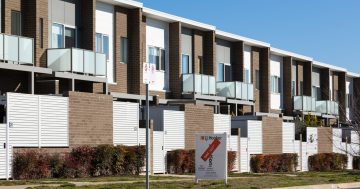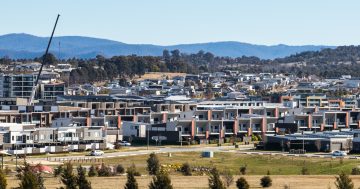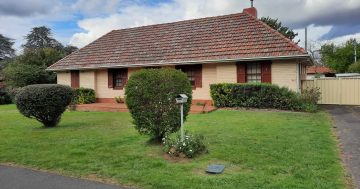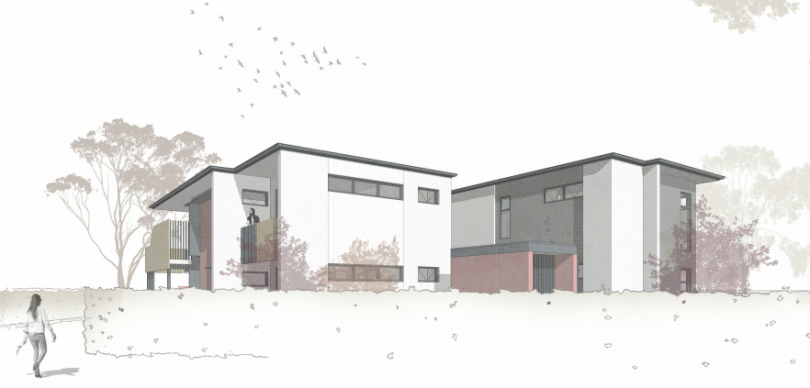
An artist’s impression of the proposed Manor House in Griffith, south-west view. Image: Rob Henry Architects.
A one-off change to the Territory Plan could usher in a new wave of higher density development across Canberra’s suburbs, community representatives fear.
Draft Variation 375 would amend the Multi Unit Housing Development Code and change the Griffith Precinct Map and Code so a so-called Manor House – a two storey, 4 unit complex with nine car parks – could be built at 20 Blaxland Crescent, currently zoned RZ1, for residential low-rise, low-density housing.
It has been proposed by the owners under the umbrella of the government’s Demonstration Housing Project, which aims to test innovative forms of housing to address emerging needs.
The planning directorate website says it will work with proponents to deliver a handful of built homes that showcase different housing types such as co-housing and ageing in place homes to make for a more sustainable and inclusive future for Canberra.
It says the Manor House is a housing typology showcasing how infill development can be delivered within the same ‘footprint’ as a residential house.
But the Inner South Canberra Community Council, representing eight inner south organisations, believes that the proposal pre-empts the current review of the Territory Plan, is unnecessary and will create a precedent for similar development across Canberra’s suburbs.
Chair Gary Kent says the government should not change the residential planning regulations for one block, based on the pretext of running an architectural design project.
“If a four-unit Manor House can be built on this site, they can be built anywhere throughout the suburbs. Cramming a Manor House into an RZ1 zone is not high-quality living,” he says in the council’s objection to DV375.
He says there is no need to test a Manor House in the ACT because they have already been built in NSW, and it would be simpler to visit those sites.
Mr Kent says the government itself argues that off or site-specific Variations to the Territory Plan are not generally supported unless it can be demonstrated that there is an overriding public benefit or good and it is consistent with the planning objectives of the ACT Government.
“The only beneficiaries, if the Manor House were to be built, would appear to be the proponents, who live there already and could sell the units,” he says.
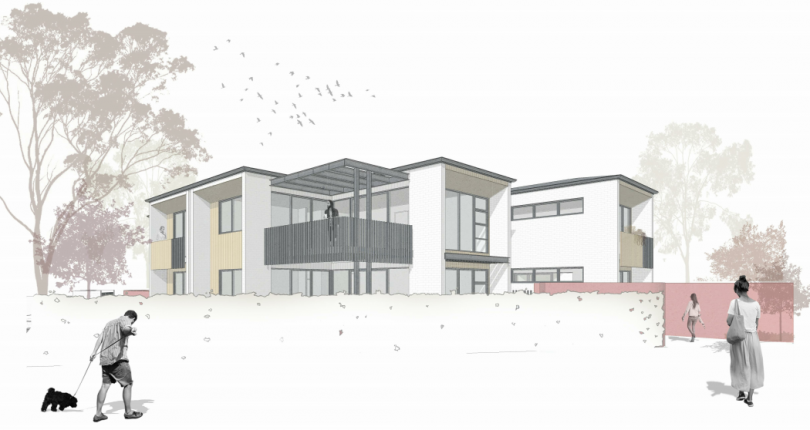
A north-east view of the proposed Manor House in Griffith. Image: Rob Henry Architects.
Mr Kent says the project would only create planning uncertainty for residents.
“The largest investment for most families is the purchase of a home. It is crucial they know what could be built next to them,” he says.
“Families need certainty and trust in the planning system. They do not want the surprise of a four-unit, two-storey, apartment-style dwelling with nine car parks built next door and impacting on their privacy and amenity.”
Mr Kent says that in 2018 the Inner South already had the highest ratio of high-density dwellings of Canberra’s eight districts. Since then, more than 2,000 new dwellings are in the pipeline, excluding the developments at Kingston Foreshore.
“There is no need for more intensification,” he says.
Residents are also worried that changing the rules to allow for the construction of units will reduce the value of existing houses and increase noise, traffic and safety concerns.
Mr Kent says the project is supposed to “test the effectiveness of different housing types through real examples and future review through post-occupancy modelling”, but the government has not said when the testing will be done, what criteria will be used for evaluation or who will do it.












